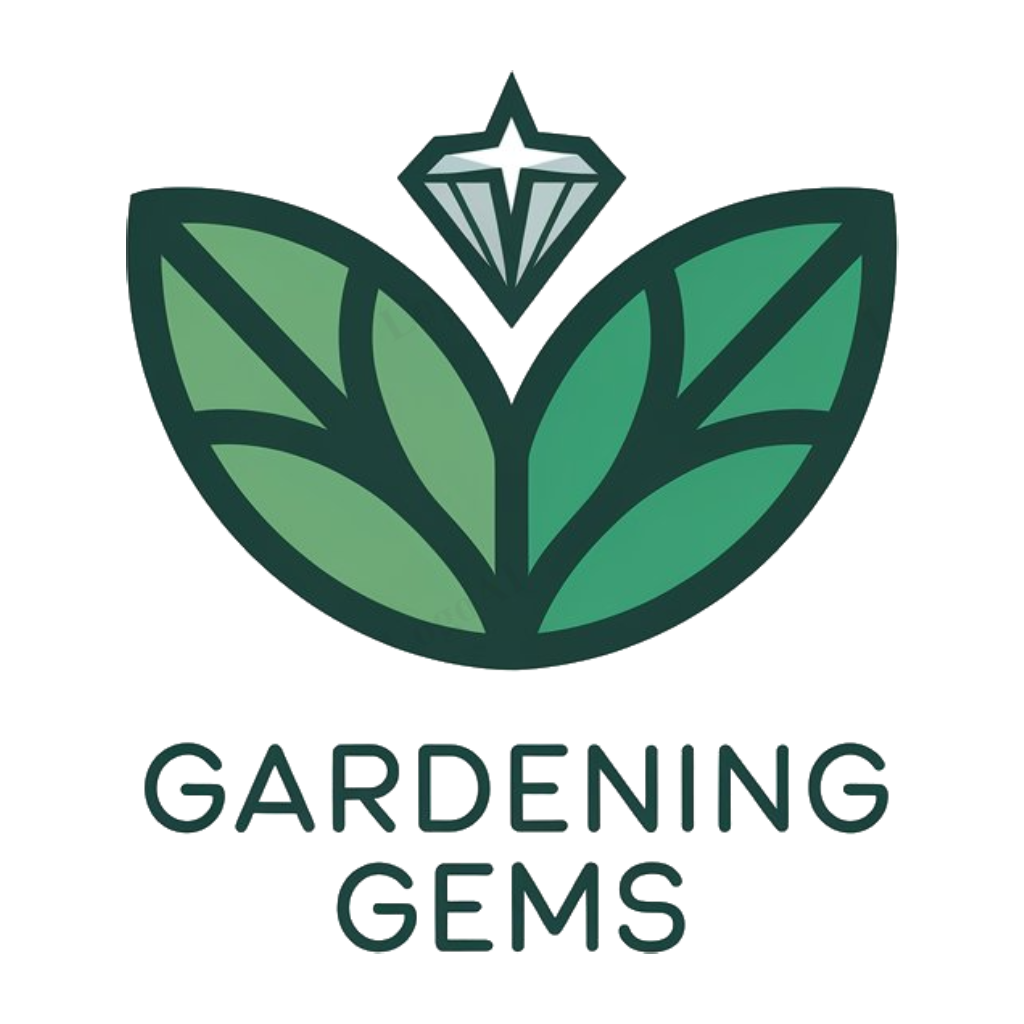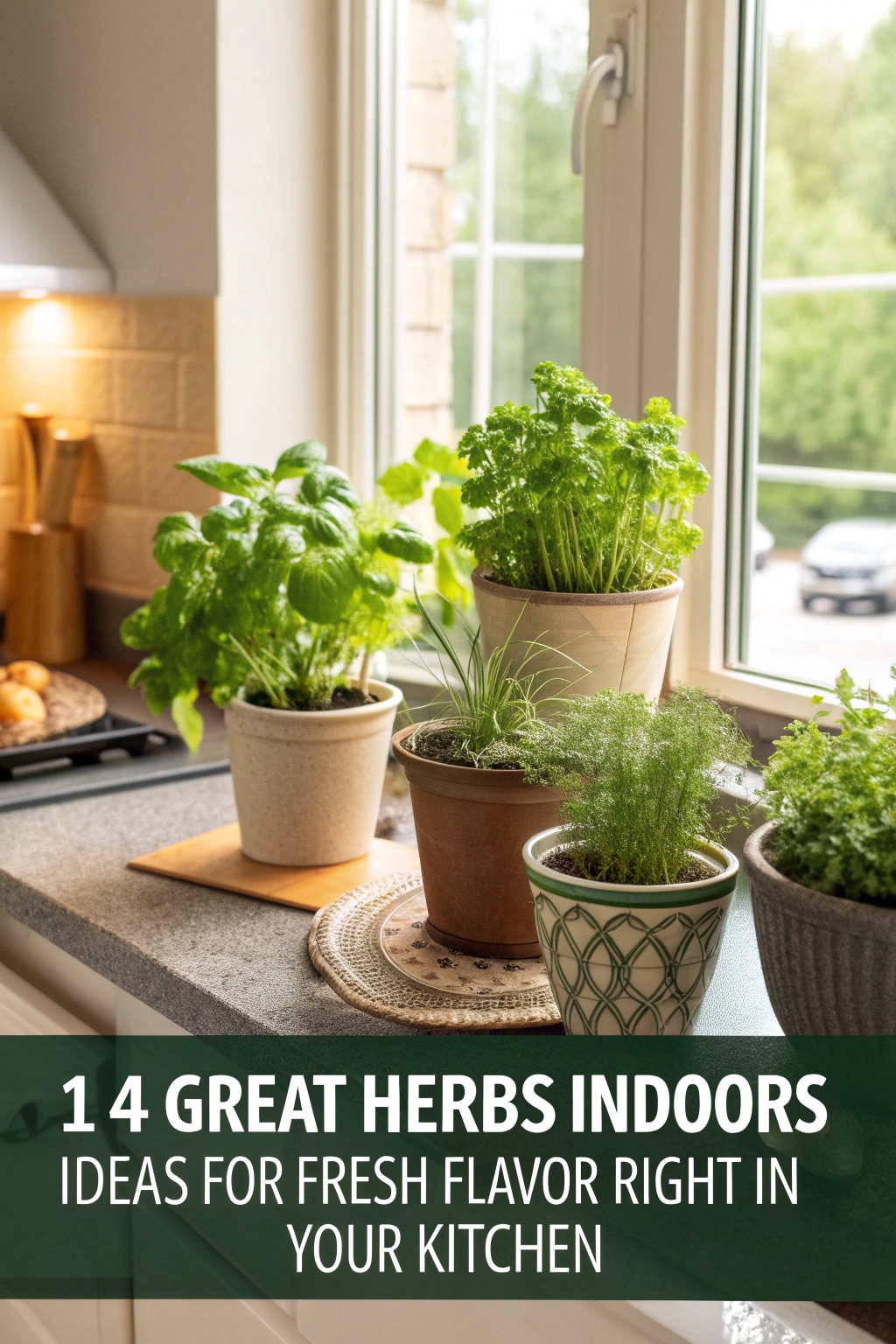Growing herbs indoors is easier than you think. You can have fresh flavors in your kitchen all year round with just a little care. Herbs like basil and mint love to grow in pots and can thrive with proper care.
You’re just a step away from discovering the secret to bringing fresh flavors to your kitchen. Choosing the right herbs is the first step, and there are many amazing options to pick from. Which ones will you choose to start growing today?
Basil in the Kitchen

Basil in the kitchen adds a fresh touch with its fragrant leaves and versatile uses. Plant it in a pot on the windowsill for easy access while cooking, allowing its aroma to waft through the air and inspire culinary creations. Regular pruning encourages bushy growth and prevents the plant from flowering.
Growing Mint Indoors

Growing mint indoors requires partial shade and moist soil. Choose a container with good drainage and fertilize sparingly. Mint can be grown in water or a potting mix, and regular pruning encourages bushy growth. Keep the temperature between 65-75°F for ideal growth, and pinch off flower buds to promote leaf production and prevent the plant from becoming leggy.
Cilantro Care Tips
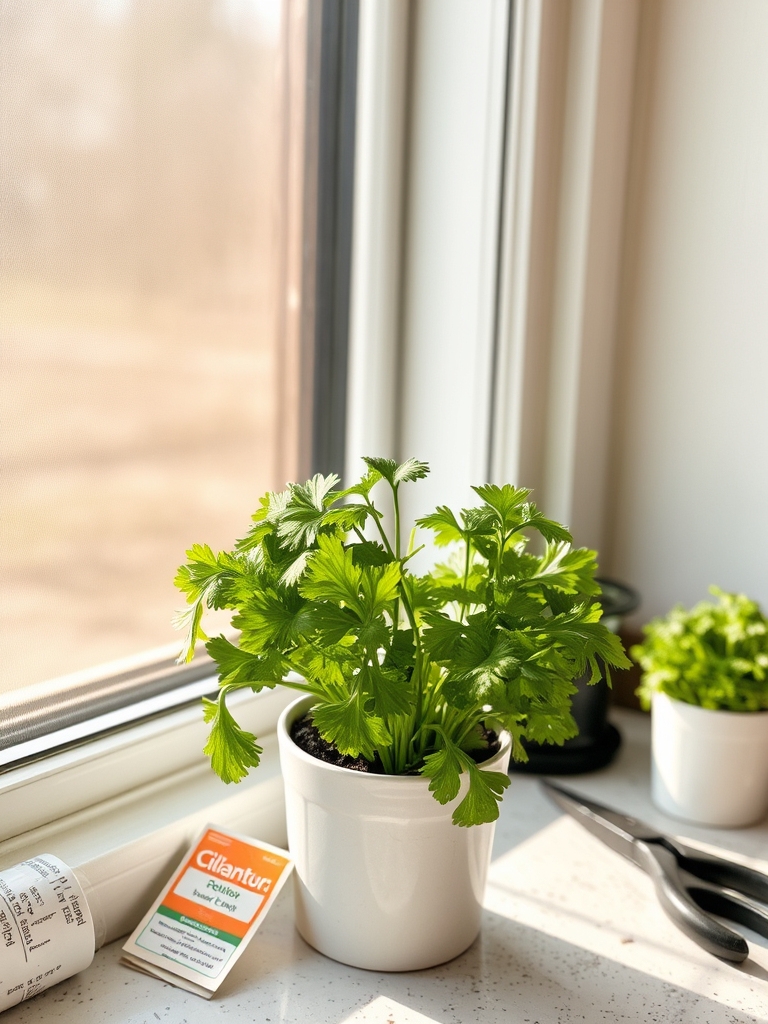
Cilantro requires minimal care when grown indoors. It prefers well-draining soil and partial shade. Water carefully, as cilantro is prone to root rot. Fertilize lightly, and prune regularly to encourage new growth. Cilantro is a fast-growing herb and does best in cooler temperatures, typically between 65-75°F. Harvest leaves as needed to prevent the plant from flowering.
Parsley Planters
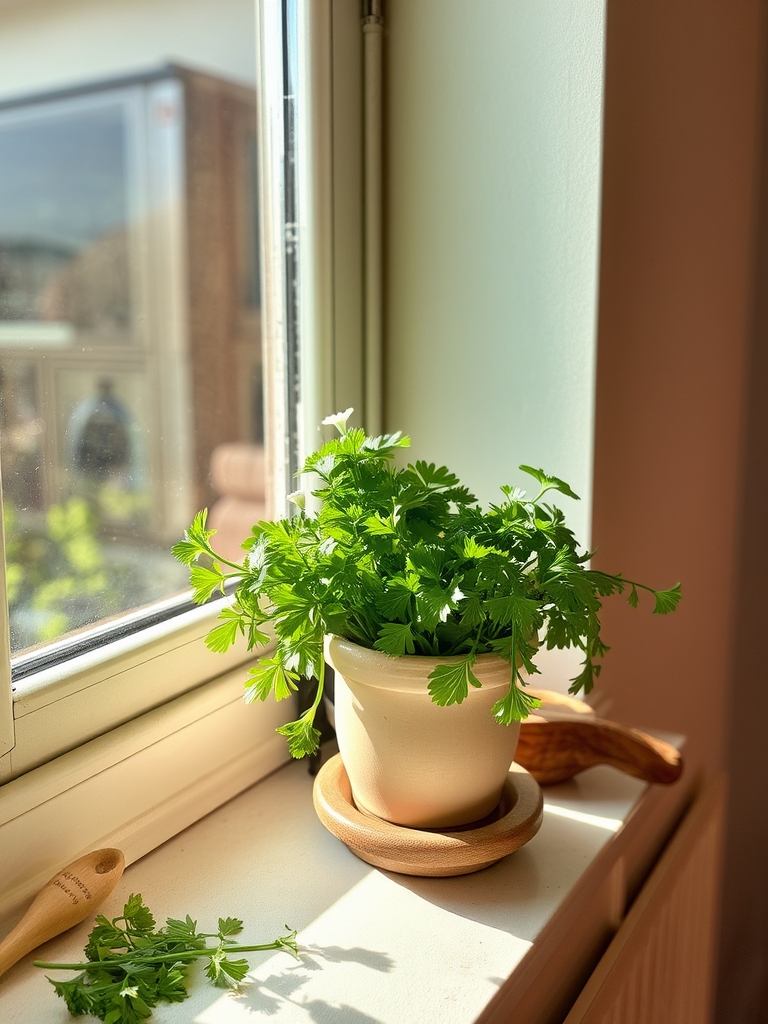
Parsley planters can add a fresh touch to indoor spaces. They come in various shapes, sizes, and materials, from small pots to hanging baskets. Choose a planter that fits your style and provides good drainage to keep the parsley healthy and thriving. Place it near a sunny window for ideal growth and enjoy the fragrance and flavor of fresh parsley year-round.
Indoor Thyme Gardens

Indoor thyme gardens are a delightful way to bring freshness to your home. Thyme can thrive in small pots or planters, requiring minimal space and care. With proper lighting and watering, thyme can grow year-round indoors, providing a fragrant and flavorful addition to various dishes and teas. Regular pruning encourages new growth.
Chive Plant Benefits

Chive plants offer numerous benefits, including their onion-like flavor and medicinal properties. They are rich in vitamins, minerals, and antioxidants, making them a healthy addition to various dishes. Chives also repel aphids and other pests, making them a useful companion plant for indoor gardens, promoting a balanced and thriving ecosystem.
Dill Decorating Ideas

Dill decorating ideas bring a fresh touch to indoor spaces. Use potted dill plants as a centerpiece or place them on a windowsill to add a pop of green. Hang dried dill flowers in a wreath or bouquet for a rustic look, or incorporate dill into a floral arrangement for a unique and fragrant display.
Sage Advice for Growers
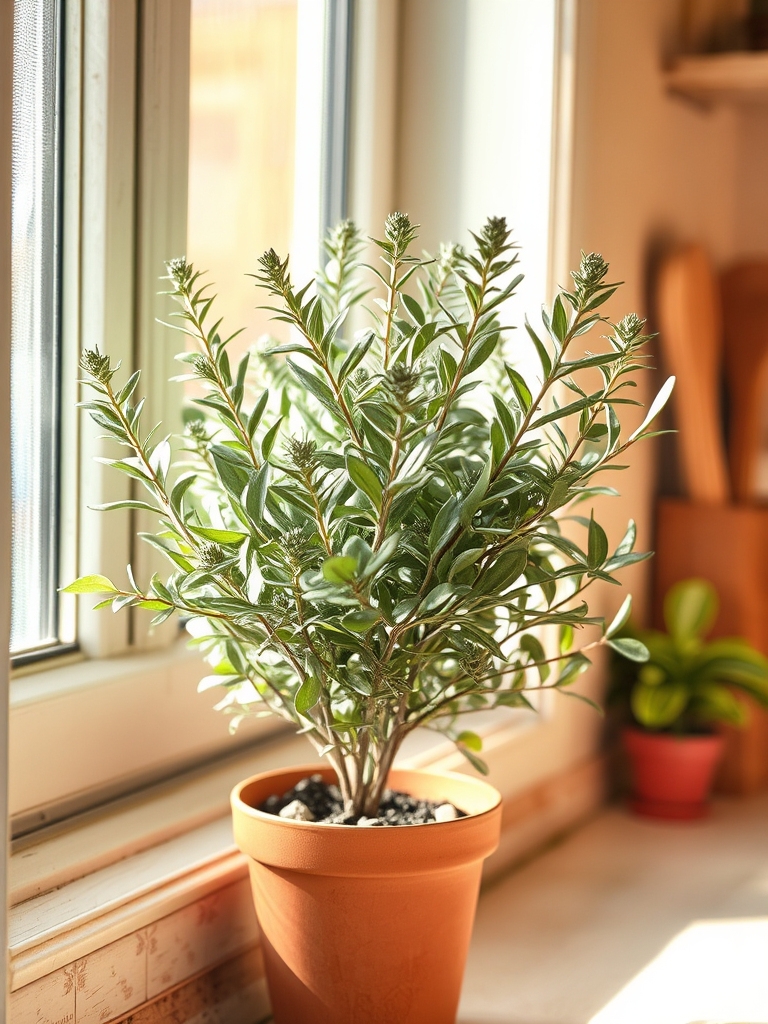
Sage is a low-maintenance herb that thrives indoors with proper care. Provide it with bright, indirect light and water sparingly to prevent root rot. Prune regularly to promote new growth and prevent the plant from becoming leggy. This will guarantee a healthy and productive sage plant that can be harvested year-round.
Oregano in Pots

Oregano in pots is a great way to have this versatile herb year-round. Choose a container with good drainage and plant in well-draining soil. Oregano prefers partial shade and regular watering. Prune regularly to promote bushy growth and prevent flowering, ensuring a continuous supply of fresh leaves for cooking and herbal remedies. Regular harvesting encourages new growth.
Creating a Herb Station

A herb station is a designated area for growing and maintaining herbs indoors. It can be a wooden or metal planter, a trellis, or a windowsill box. This station provides a space for herbs to receive adequate light, water, and care, making it easier to tend to and harvest them throughout the year.
Lavender in the Kitchen

Lavender adds a soothing ambiance to the kitchen, freshening the air and promoting relaxation. Its calming scent can also aid digestion, making it a great addition to the heart of the home. Dried lavender buds can be used in baked goods, teas, and as a garnish, infusing a subtle floral flavor into various dishes.
Tarragon Growing Tips

Tarragon is a fragrant herb that requires well-drained soil and partial shade. To grow tarragon indoors, use a container with good drainage and a slightly acidic potting mix. Water sparingly, allowing soil to dry slightly between waterings. Prune regularly to promote bushy growth and prevent flowering, which can reduce flavor and aroma.
Marjoram Indoor Care
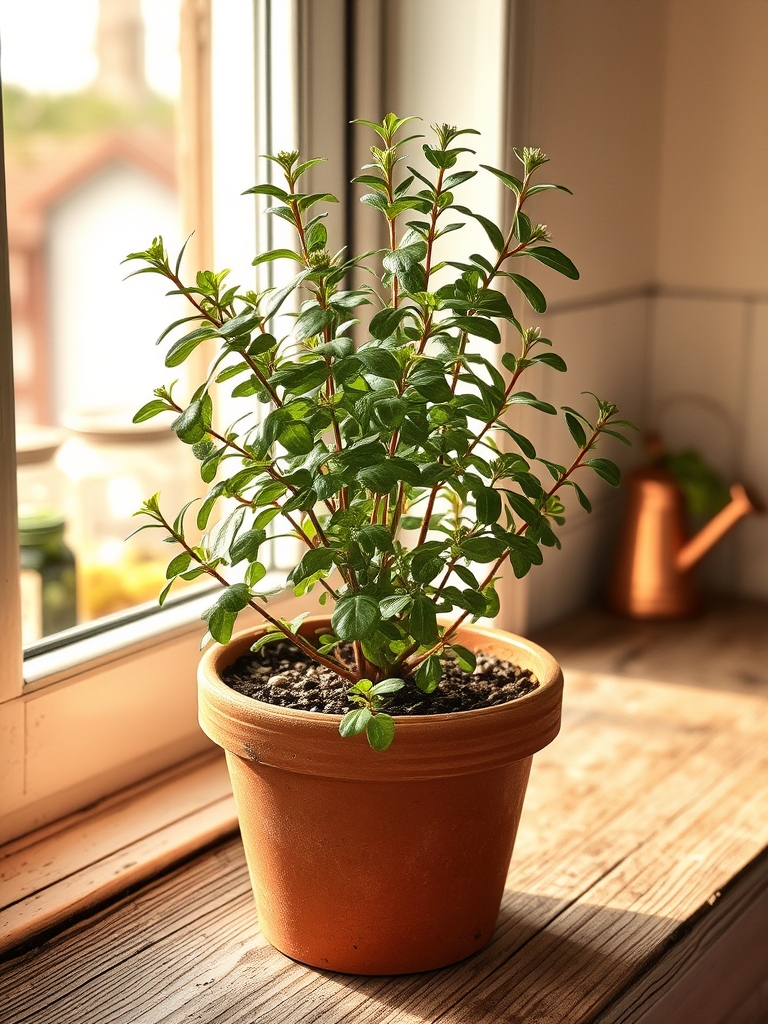
Marjoram indoor care involves providing plenty of sunlight and well-draining soil. Keep the soil moist but not waterlogged, and fertilize regularly. Prune the plant to maintain shape and promote new growth. Marjoram prefers warmer temperatures, between 65-75°F, making it a great addition to indoor gardens and kitchens. Regular harvesting encourages bushy growth.
Indoor Herb Combos

Pair complementary herbs like basil and mint for an invigorating twist, or combine parsley and dill for a classic flavor duo. Cilantro and chives create a zesty blend, while rosemary and thyme offer a savory mix. Experiment with various indoor herb combinations to discover unique flavors and aromas for cooking and garnishing. This boosts their fragrance and beauty indoors.
Conclusion
You’ve now got the keys to reveal a treasure trove of flavors, with 14 great herbs indoors ideas at your fingertips. Growing your own herbs is a cut above the rest, adding a pinch of perfection to any dish. With these tips, you’ll be the spice of life in your kitchen, cooking up a storm in no time.
